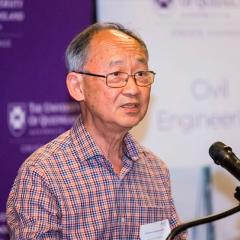For over two decades, UQ has been at the forefront of advances in magnetic resonance imaging (MRI) technology, with its first innovation now used in 67 per cent of MRI scanners manufactured worldwide – all thanks to a holiday work experience program undertaken by one junior engineer.
“As an undergraduate electrical engineer in the late 1980s, I took up a vacation placement in the biomedical engineering department at Brisbane’s Princess Alexandra Hospital,” said MRI technology pioneer Professor Stuart Crozier.
“Working in the spinal unit, I saw how some biomedical engineers had developed small devices to activate patient muscles, enabling them to do ordinary things like lifting a cup to their mouth. I was amazed – and inspired,” he said.
Inspired so much so that he pledged to use his skills and understanding of technology to benefit patients. Following that vacation program, Professor Crozier went on to receive a placement in an MRI research group at the Mater Hospital in 1988 – a placement that was set to transform his life and that of so many others.
“MRI is a relatively young diagnostic imaging technology compared to the others commonly used,” he says, “and when I first joined the research program there were lots of breakthroughs happening.
“Exciting developments are still happening and we are closely involved.”
Collaborating with Professor David Doddrell at UQ’s Centre for Magnetic Resonance (now the Centre for Advanced Imaging (CAI)), Professor Crozier co-invented a signal correction technology that corrected magnetic field distortions to produce faster, clearer and more accurate images, without adding to the cost of the MRI machines.



